Fast Microwave Lemon Curd with Orange and Lime Variations
Sneak Preview: Mix Fast Microwave Lemon Curd with an immersion blender, a food processor, or a blender to mix the curd. Cook it in your microwave oven–a double boiler is unnecessary. Don’t miss the orange and lime variations.
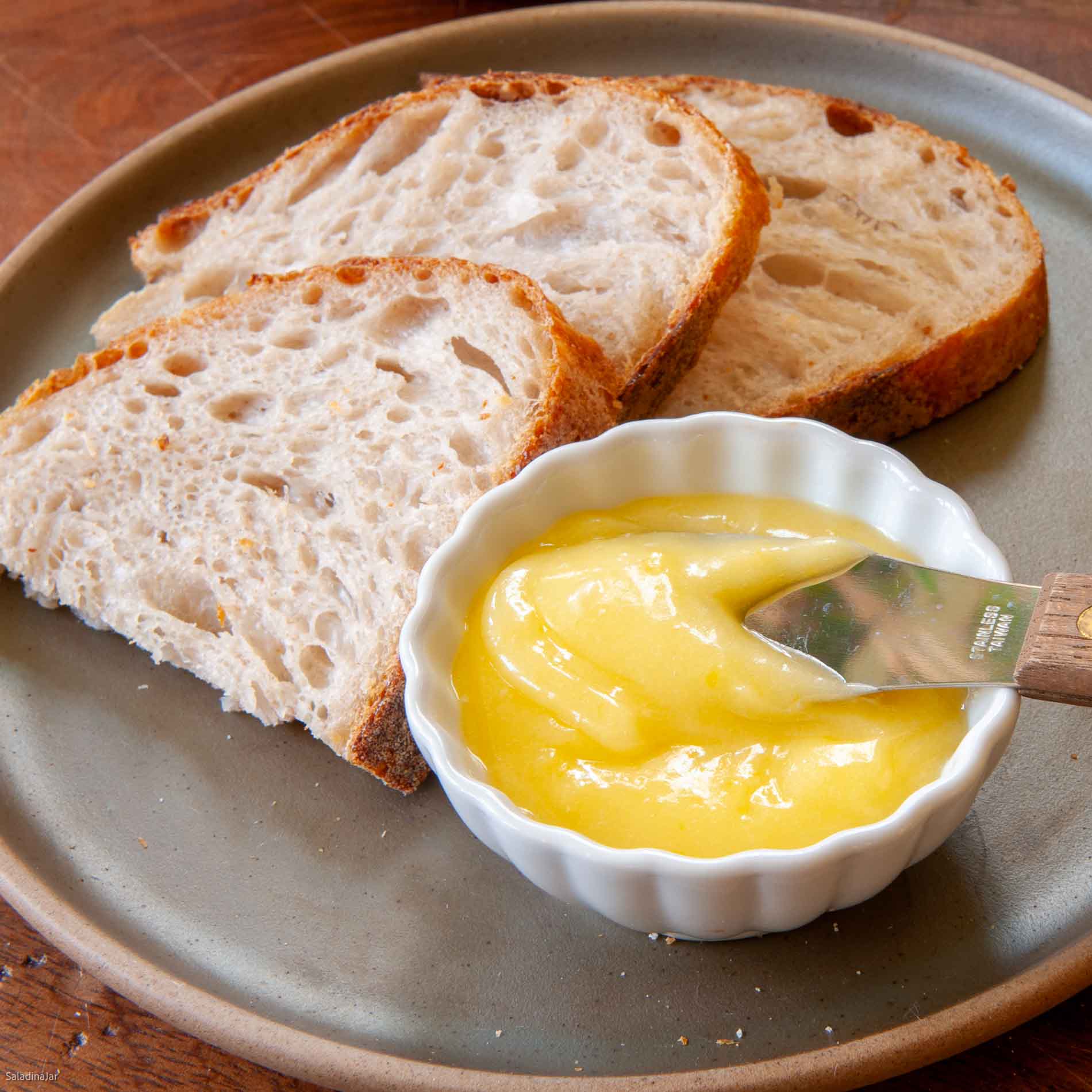
As an Amazon Associate, I earn from qualifying purchases.
Are you a citrus lover? Maybe you have citrus trees in your backyard and need to do something besides making juice with all those oranges, lemons, or limes.
Or perhaps you have a recipe that calls for orange or lemon curd, and you can’t find it at the store. But, even if you find it, it may be costly and not as fresh as you would like.
Using a blender, food processor, or immersion blender in combination with your microwave is the secret to perfect lemon curd every time.
Happy Cooks Speak Up
This lemon curd recipe is AMAZING!!!! I’ve made it hundreds of times. This recipe makes it almost effortless. I’ve showed it to my DIL and best friend, and now they make it frequently.–LEAH S.
What is Lemon Curd?
Lemon curd is a sweet topping or jelly-like spread consisting of eggs, butter, sugar, lemon juice, and lemon rind. Besides lemons, make curd with oranges, tangerines, limes, grapefruit, or another citrus. Some people use other fruits like blackberries, strawberries, or cherry juice.
I purchased lemon curd in a jar from the grocery store in the past. (Look in the jams and jelly aisle.) Unfortunately, those little jars can be expensive and not always fresh, judging from the amount of dust on the lids! But those days are over.
Ingredients and Substitutions
- SUGAR: Add more if you like your curd extra sweet or your lemons are extra tart.
- CITRUS JUICE: You can use bottled or frozen lemon juice, but since the recipe calls for the grated rind, you might as well use fresh lemon (or orange) juice. Meyer lemons are delicious with a milder lemon taste.
- GRATED RIND: There is no acceptable substitute in my book. You could leave the rind out, but the flavor won’t be as potent.
- EGGS: The recipe specifies large eggs, which weigh about 50 grams apiece. If you prefer a thick lemon curd, add an extra egg yolk.
- BUTTER: I have only tried the real thing in this recipe. If you use salted butter, you can leave out the salt.
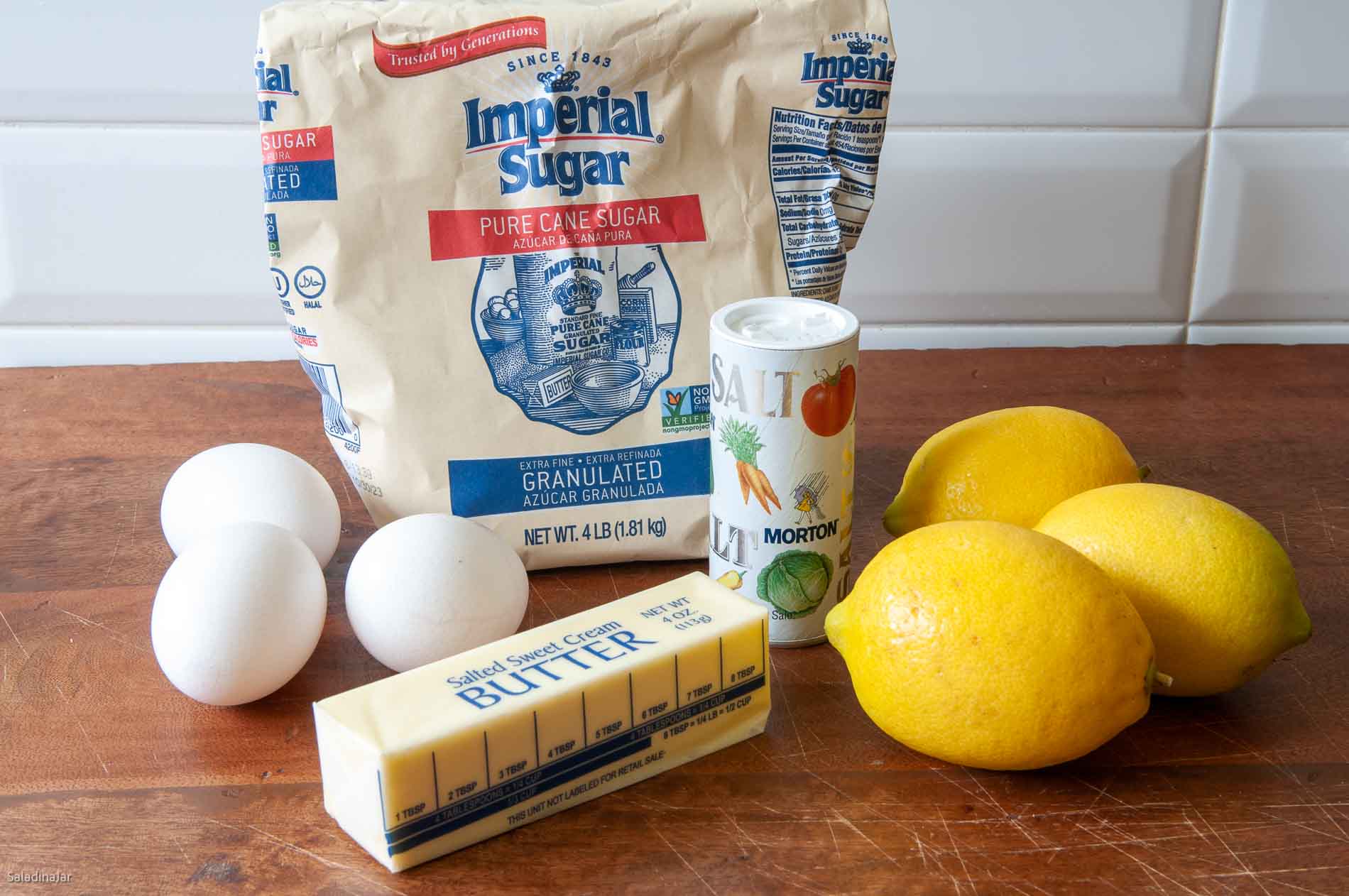
Eight Ways To Use Curd
- Add to yogurt. For example, a tablespoon of lime or lemon curd + 3/4 cup plain Greek yogurt + a sprinkle of toasted coconut = a fantastic afternoon snack or light dessert.
- Substitute for jelly on anything from toast to dinner rolls to waffles.
- Filling for a tart or a layer cake
- Make easy lemon (or lime or orange, etc.) squares.
- Use as a filling in cookies or bread like these Lemon Curd Thumbprints or kolaches.
- Fold into whipped cream.
- Use as a filling for homemade pop tarts.
- Make lemon (or orange or lime) ice cream.
Related Post: Microwave Apples with Cinnamon: A Quick Snack
Tips To Help You Succeed
1. Use a blender, food processor, or immersion blender to combine the ingredients
Thorough blending is necessary if you want a smooth, creamy texture in the final product.
Whisk the uncooked mixture well before cooking it in a microwave if you don’t have any of these appliances. Hand-whisking might result in lumps if you don’t do it thoroughly. Of course, you can always force the curd through a strainer after it cooks.
2. The best way to grate the rind
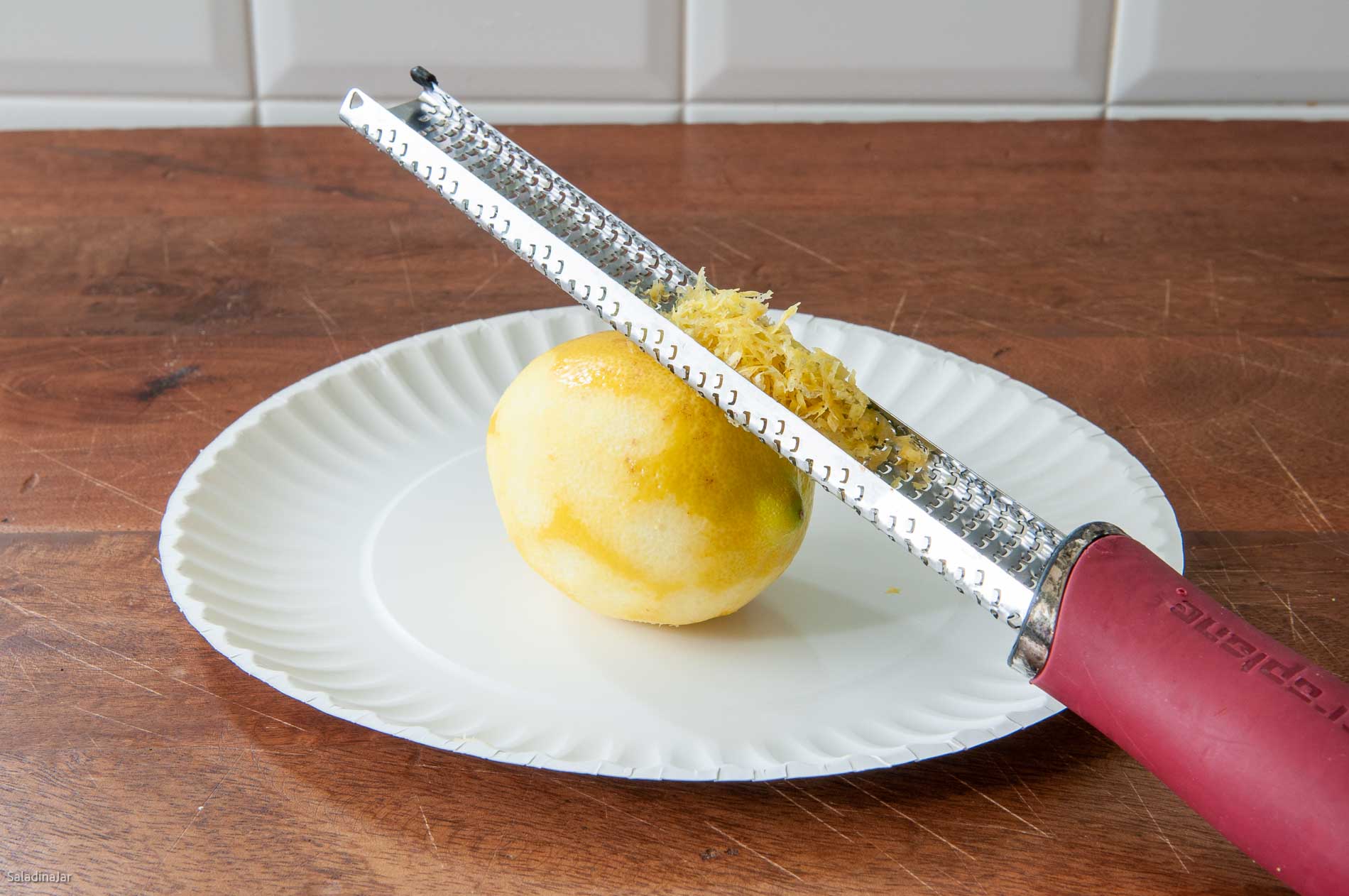
I can’t overstate the usefulness and desirability of a Microplane grater when harvesting the rind. It transforms grating rind into an enjoyable experience–no more scraped knuckles or difficulty cleaning the peel out of a grater.
Don’t grate too deeply into the skin of the fruit. The white part (pith) adds a bitter taste you want to avoid.
3. How to cook lemon curd in the microwave
Use a microwave-safe 2-quart batter bowl(paid link) and a whisk. If you use your microwave for cooking food as I do, a 2-quart batter bowl is essential. Pyrex batter bowls are cheap and extremely useful in the kitchen for microwave recipes like Microwave Banana Pudding and Microwave Chocolate Pie.
Unlike cooking on the stove, you won’t have to stand over the curd and stir it constantly—no worries about scorching. Instead, whisk every minute or two when you see the curd mixture starting to rise and thicken around the sides. You see this happen after the curd has been in the microwave for a couple of minutes.
Also, don’t let your curd boil, or the texture will be gritty instead of silky smooth. Finally, the temperature must remain below 170˚F. I stay close and watch it for the last two minutes of cooking.
Citrusy Curd Variations
Note: I like to add a touch of food coloring to the lime and orange. Otherwise, they are yellow and look almost identical to the lemon.
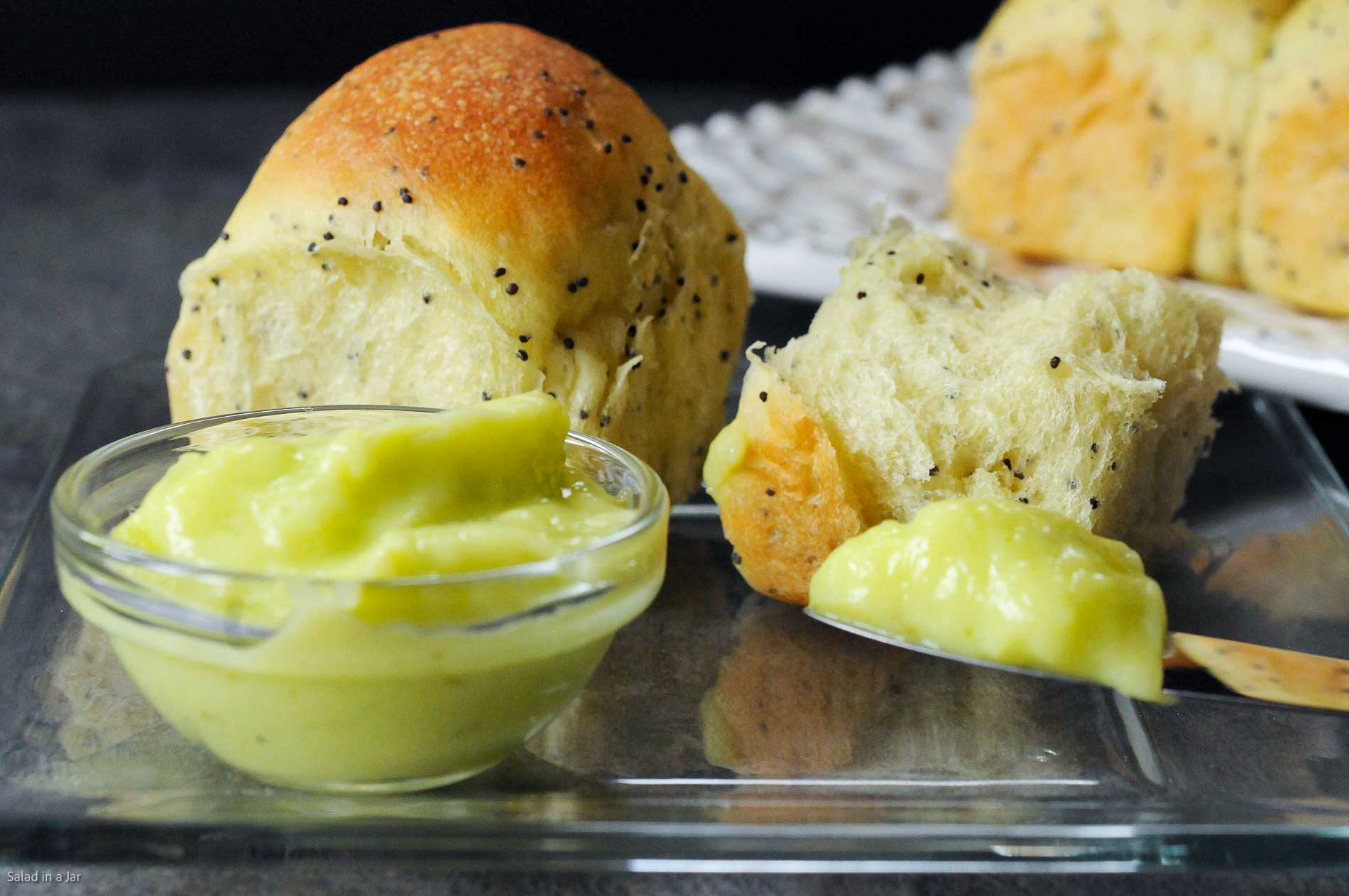
- MICROWAVE LIME CURD: Substitute lime juice for the lemon and grated lime rind for the grated lemon rind.
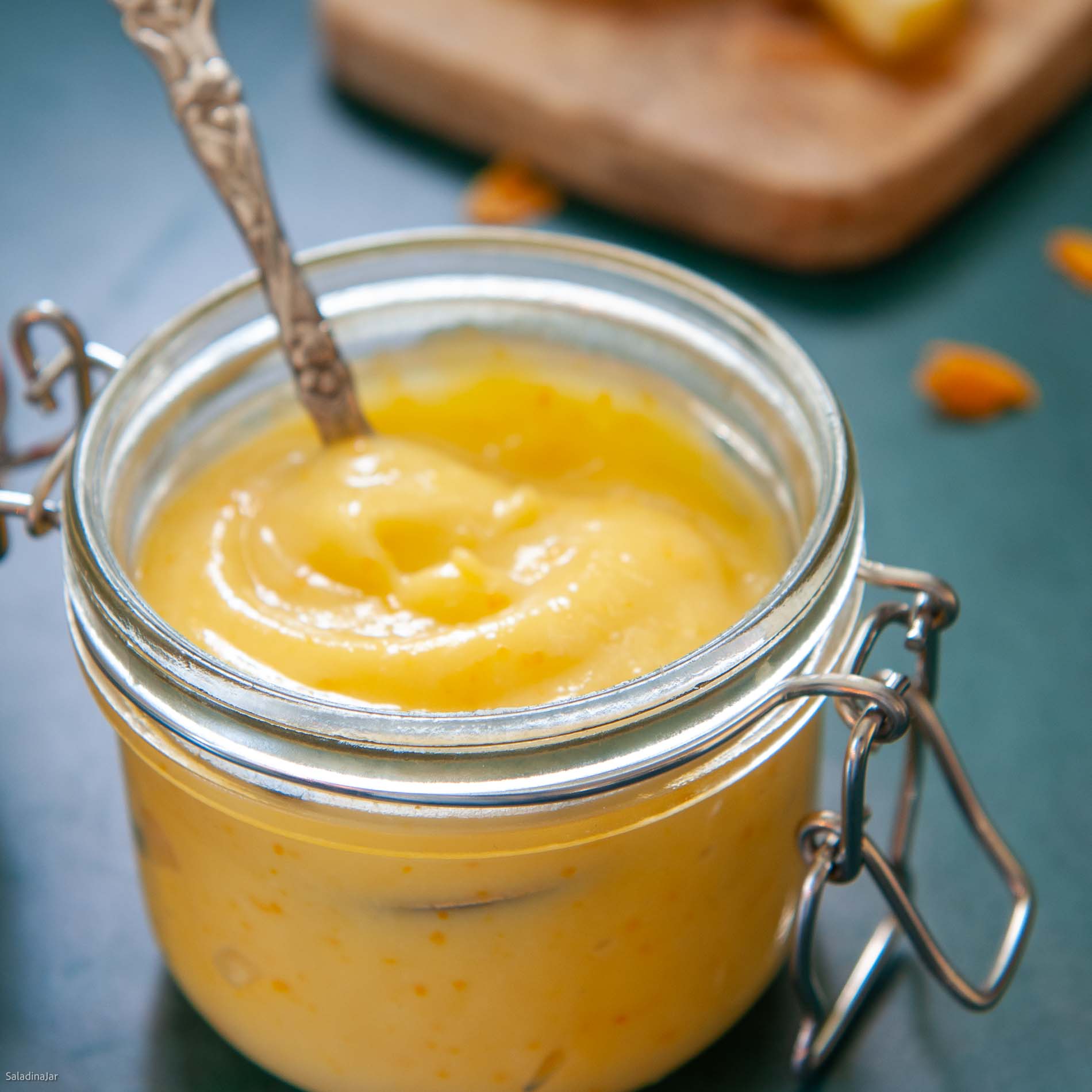
- MICROWAVE ORANGE CURD: Use the rind from one large orange and one lemon. Substitute orange juice for lemon juice.
The orange version is sweeter and not as tart. You might want to reduce the sugar a bit.
Related Post: Microwave Brownie Recipe: Easy for Kids To Mix
How To Make Microwave Orange Curd
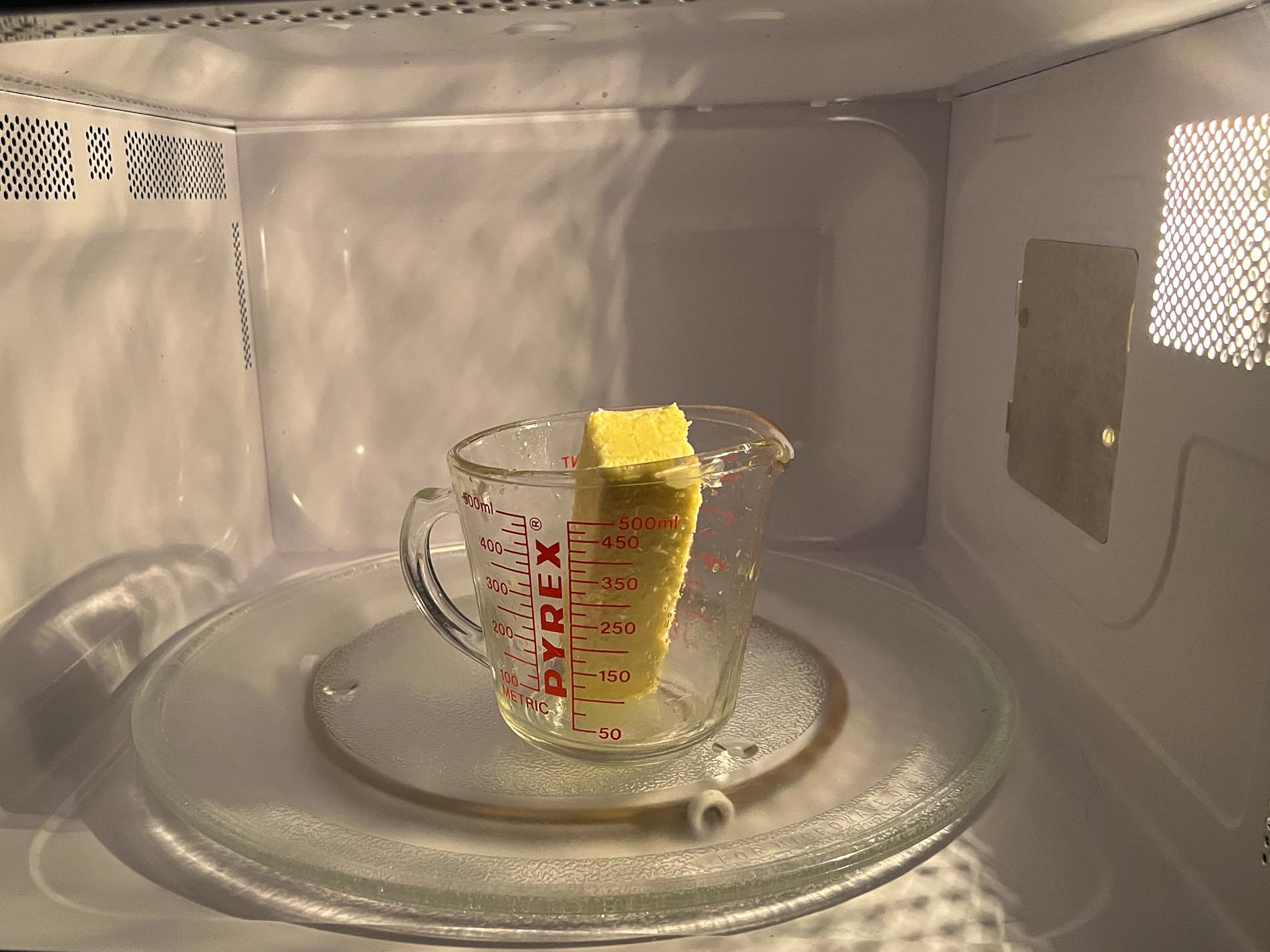
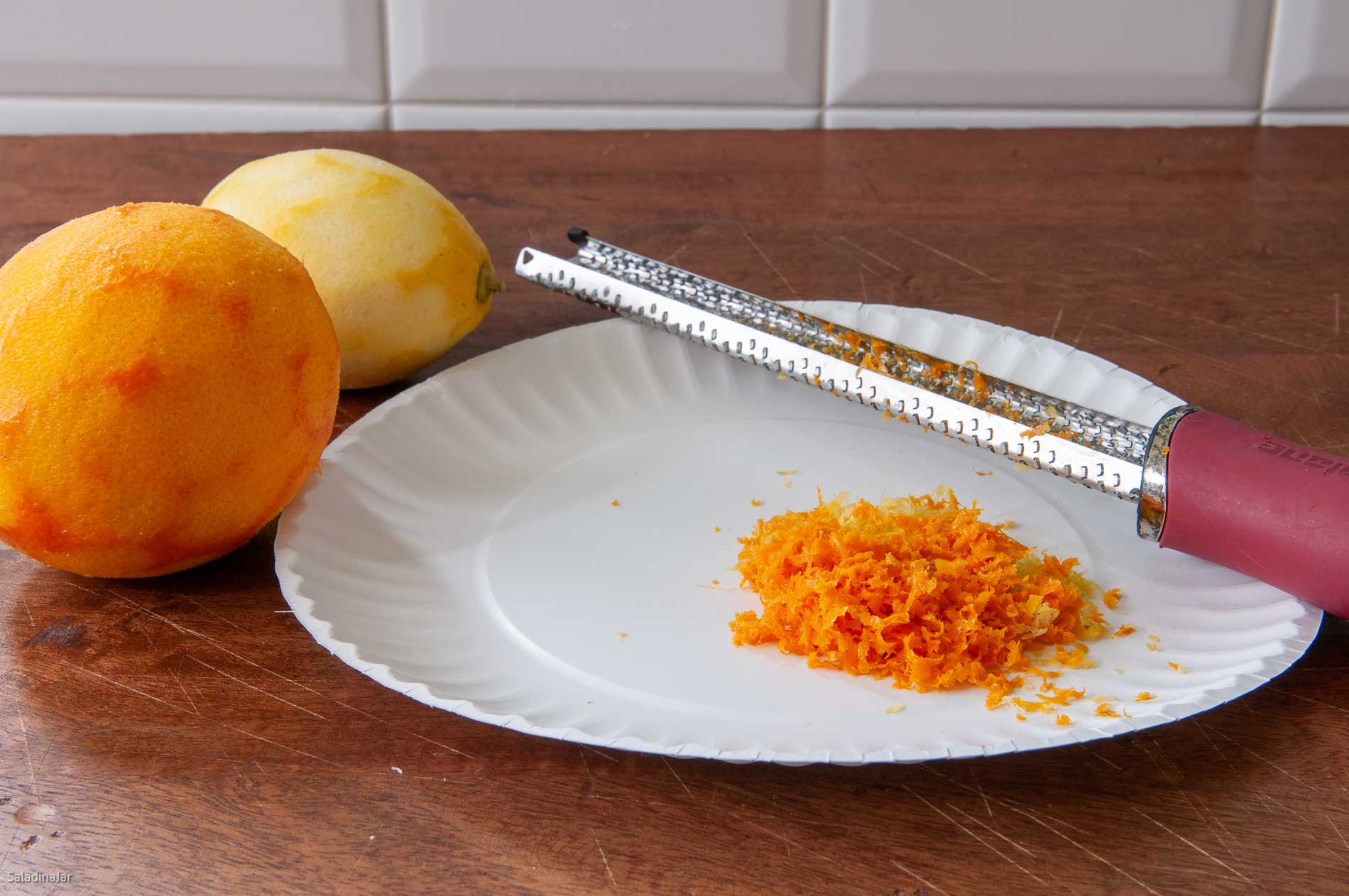
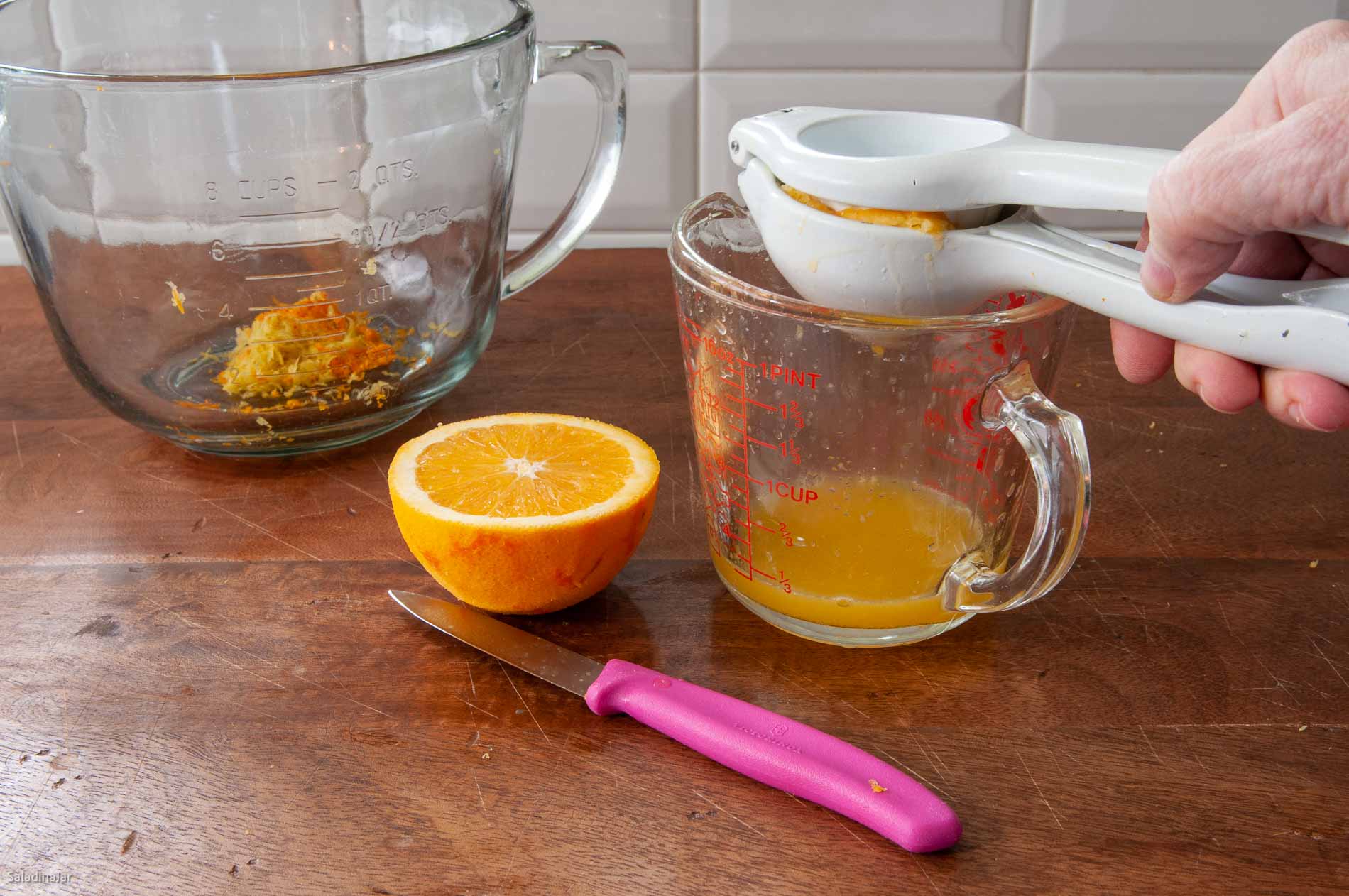
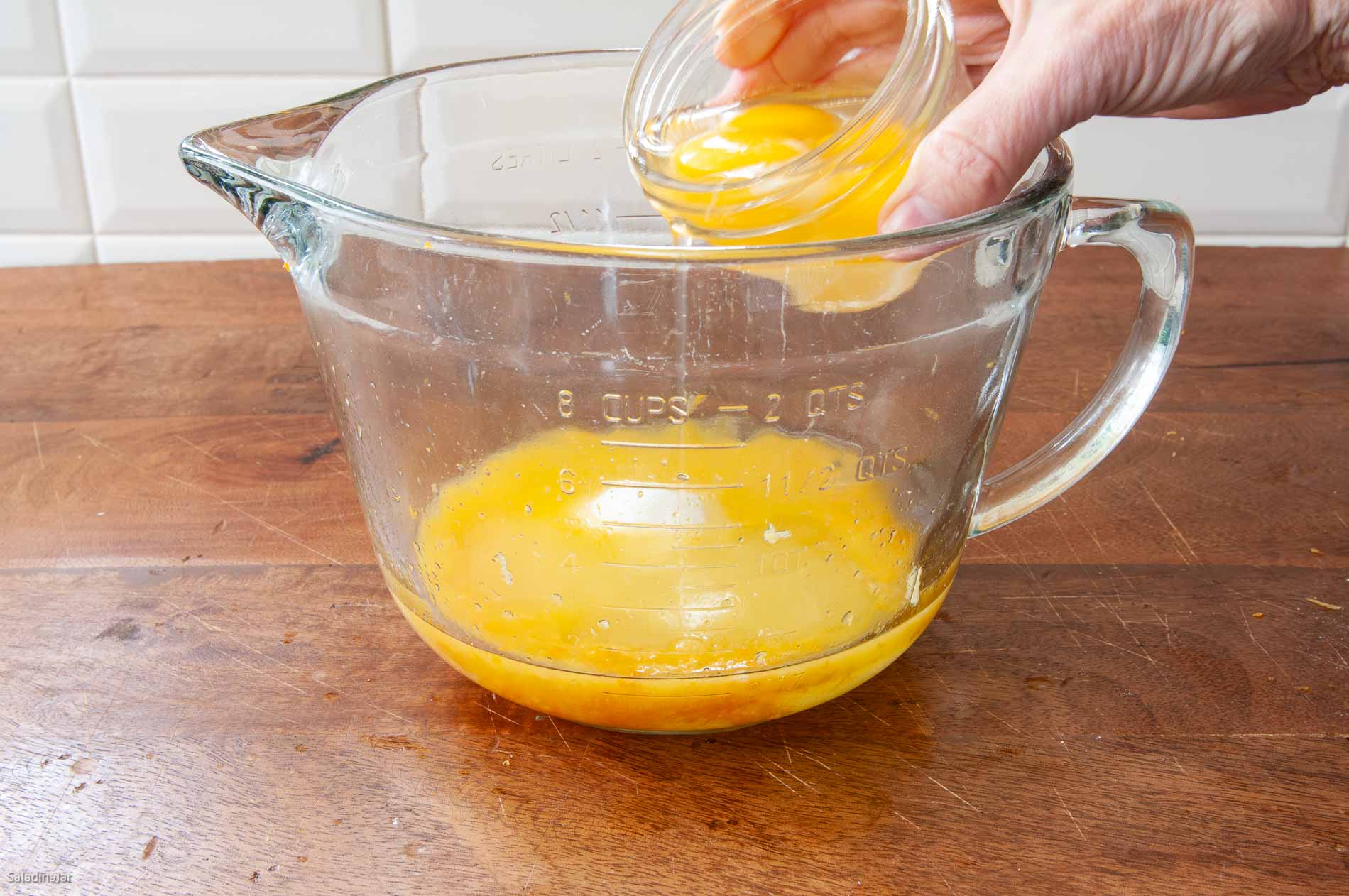
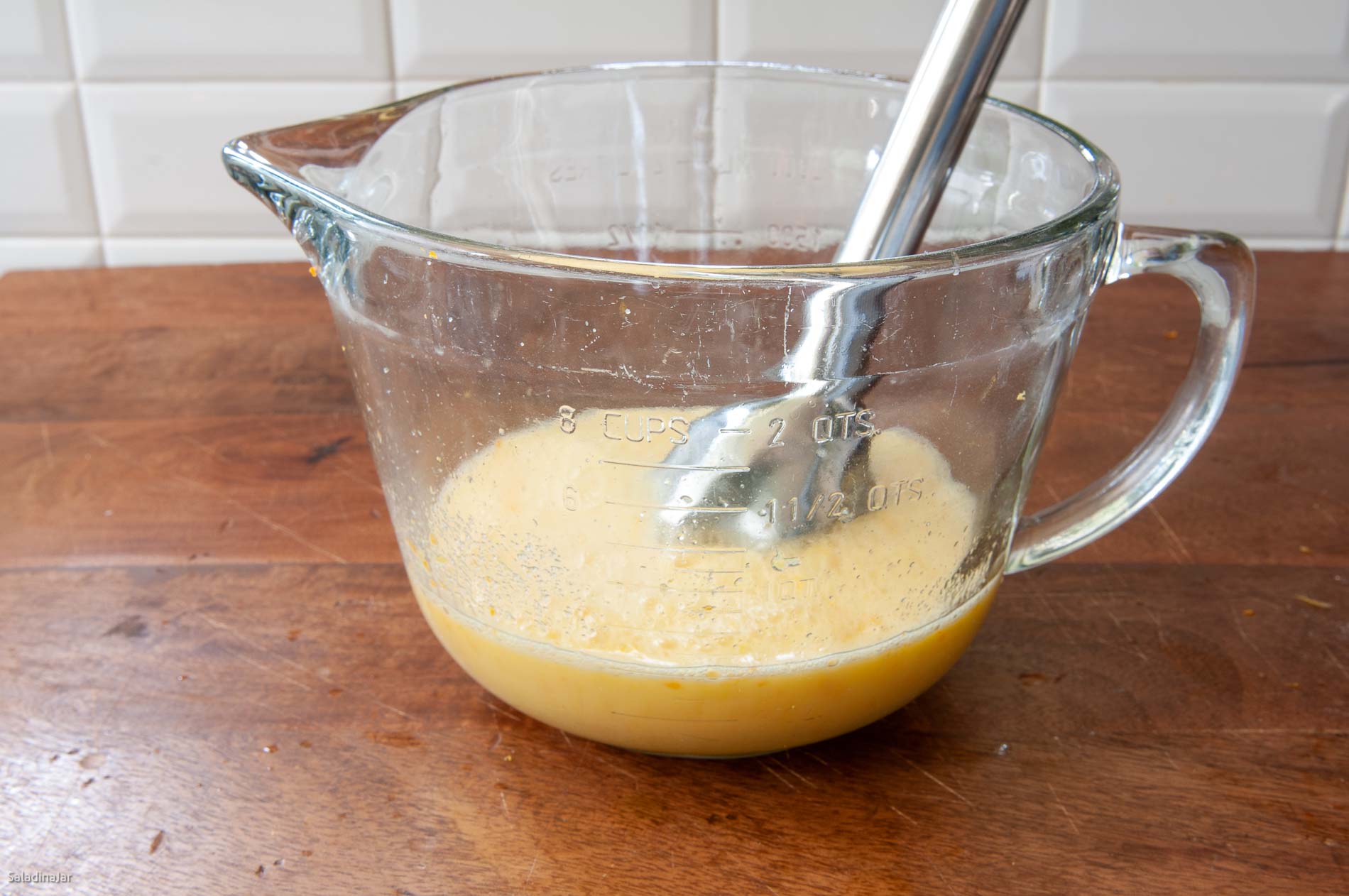
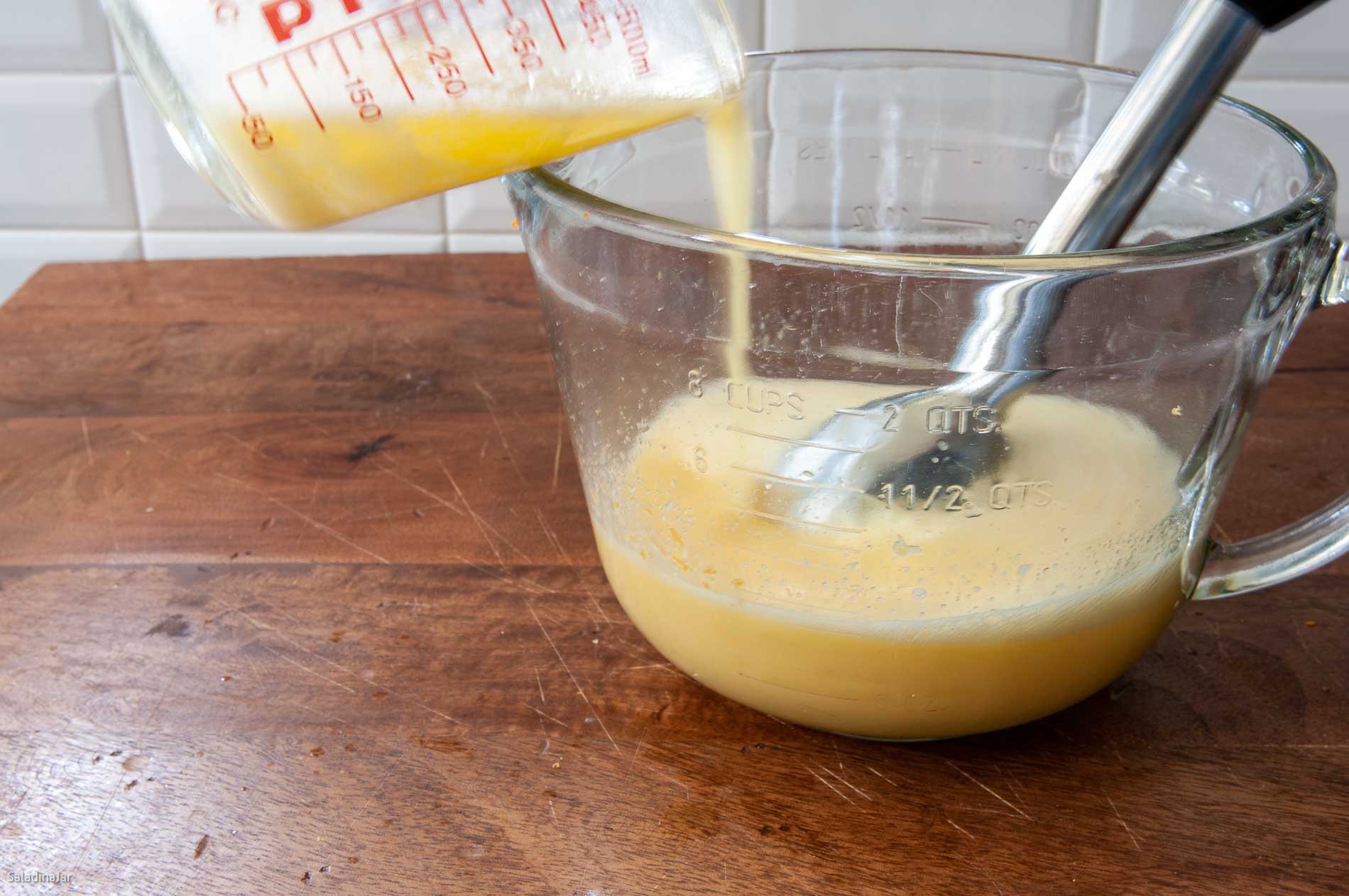
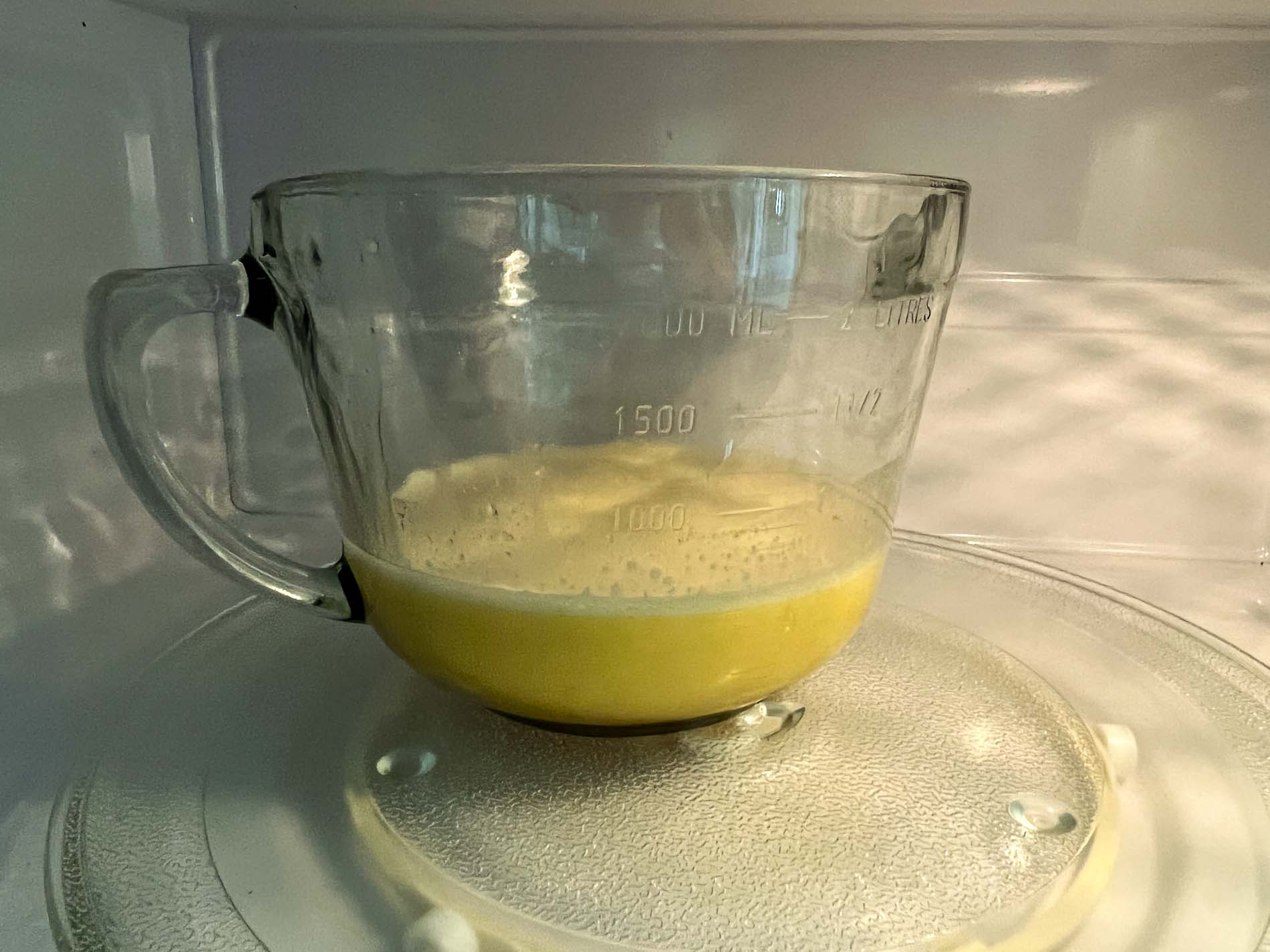
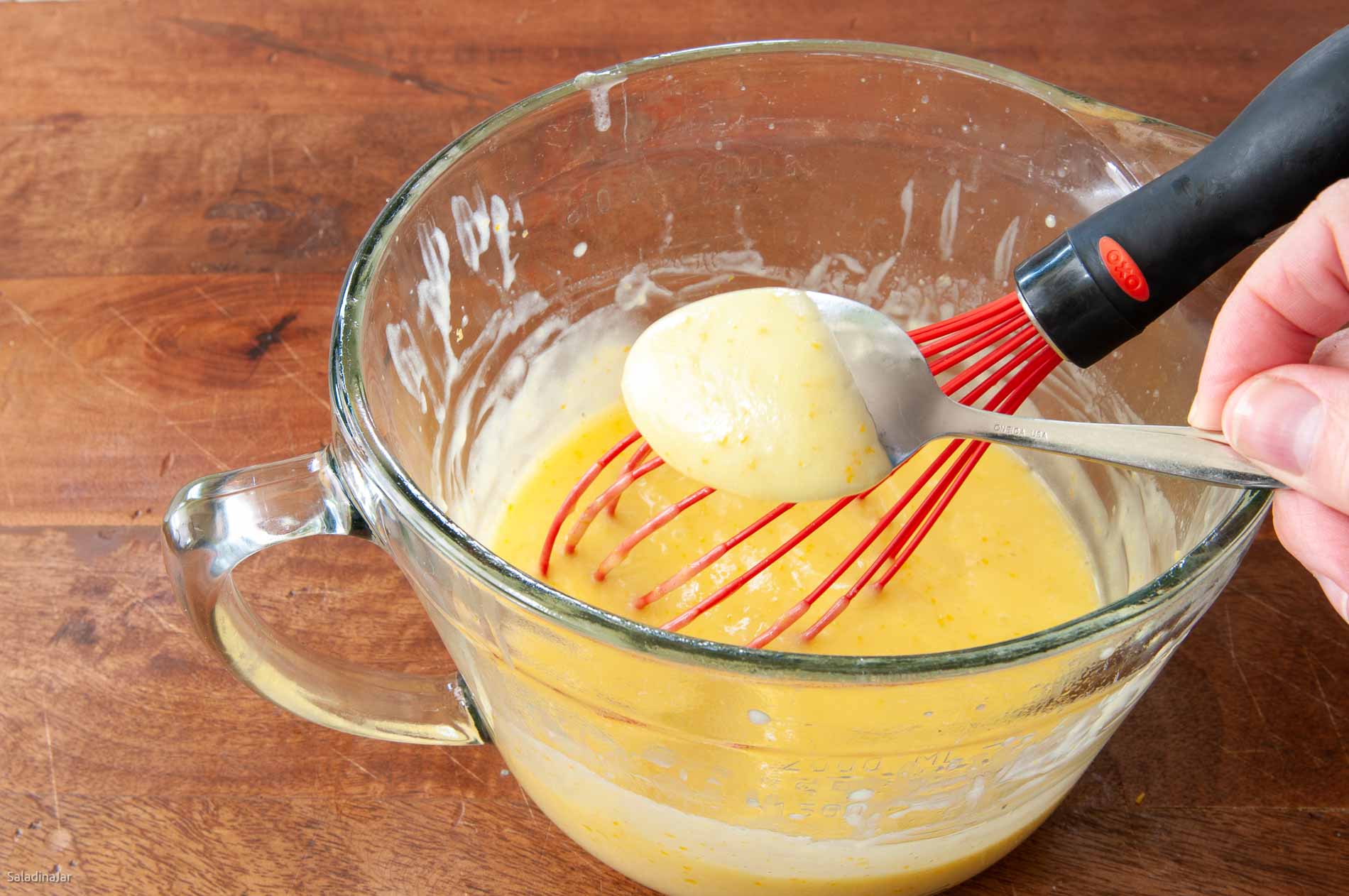
This curd has cooked enough, even if it doesn’t seem thick like jelly. Test it with a spoon. It should leave a thick coat on the backside.
FAQ for Microwave Lemon Curd
Add an egg yolk in addition to the three eggs called for in the recipe.
No problem. Use a good whisk to blend the egg mixture and add the butter before cooking in the microwave. If you end up with lumps, push the lemon curd through a sieve.
According to Harold McGee in the Keys to Good Cooking, the milk and cream in custard are replaced with fruit juice (lemon juice) and butter. The acidity of lemon reduces the risk of curdling but does not eliminate it. Both can be made using a microwave. See these recipes for Vanilla Cream Pastry, Microwave Chocolate Pie, or Zebra Cream Pie.
Use a blender and blend the juice, rind, and sugar (before you add the eggs) until the rind disappears. Continue as instructed in the recipe.
Parting thoughts: It’s hard not to eat this stuff with a spoon. My favorite way to eat lemon or orange curd is layered with cherry butter or preserves on sourdough toast. What do you do with lemon curd? I would love to know.
Help at Your Fingertips: For questions or suggestions, email Paula at saladinajar.com. If you need help, I’m happy to troubleshoot via email (faster than leaving a comment). Attach pictures and as many details as possible for the best advice.
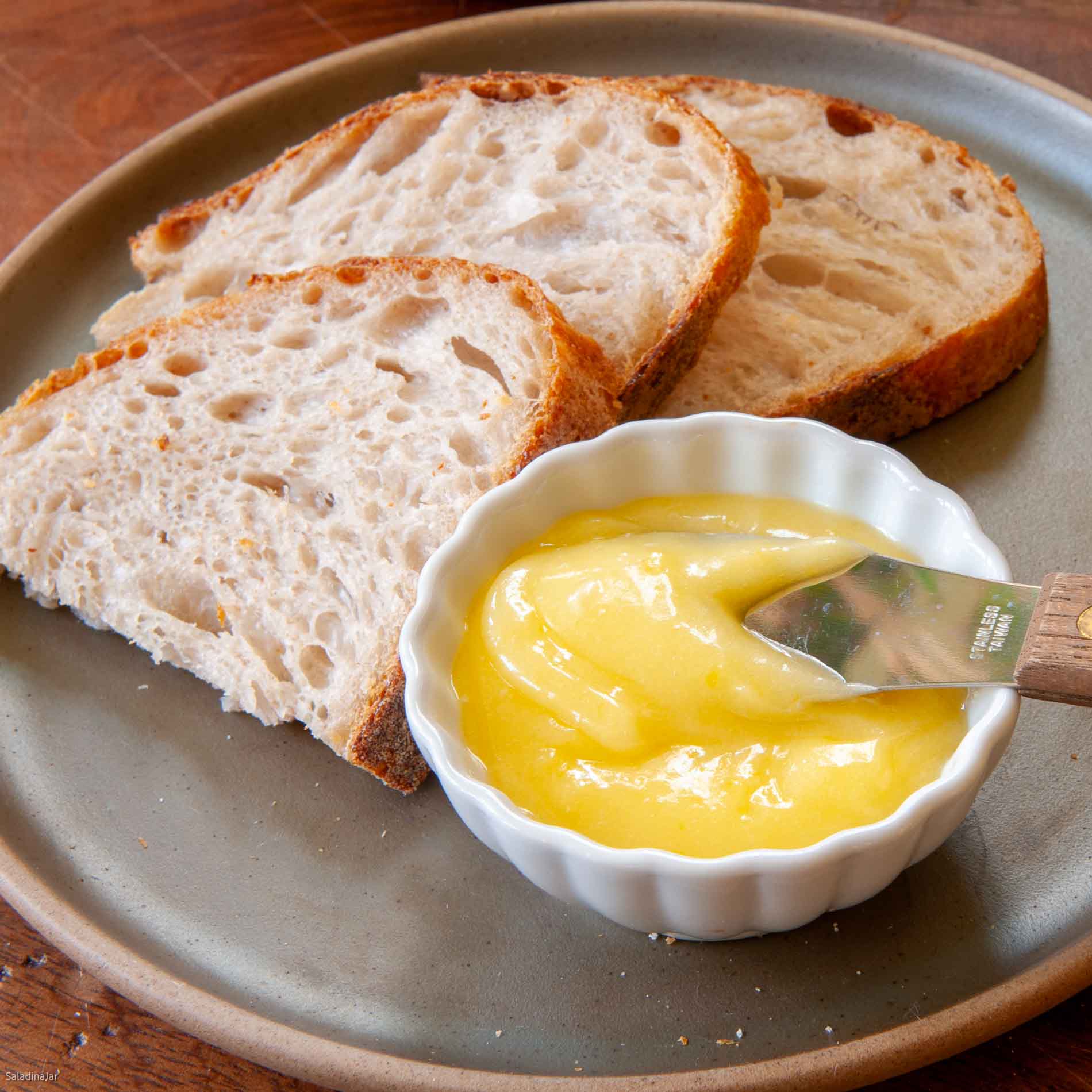
Fast Microwave Lemon Curd Recipe with Lime and Orange Versions
Rate this recipe
(5 stars if you loved it)
Video
Ingredients
- ½ cup (114 g) butter (unsalted)
- grated rind from 2 lemons (approximately 2 tablespoons)
- ½ cup (113 g) fresh lemon juice
- ¾ cup (150 g) granulated sugar
- ⅛ teaspoon table or sea salt (optional)
- 3 (150 g) large eggs
Instructions
- Melt 1/2 cup (114 g) butter in a small Pyrex measuring cup. Set aside.
- If using a blender or food processor: Add grated rind from 2 lemons, 1/2 cup (113 g) fresh lemon juice, 3/4 cup (150 g) granulated sugar, ⅛ teaspoon table or sea salt, and 3 (150 g) large eggs to a blender or food processor. Blend on the highest speed until you can barely see the grated rind. Pour the blended curd mixture into a 2-quart Pyrex batter bowl.
- If you are using an immersion blender or a whisk: Combine grated rind from 2 lemons, ½ cup juice, ¾ cup sugar, ⅛ teaspoon salt, and 3 eggs in a large Pyrex bowl or batter bowl (2-quart measuring pitcher). Blend thoroughly.
- Pour melted butter into the lemon mixture and continue to blend until smooth.
- Microwave on HIGH for 3-4 minutes, whisking well after each minute. Toward the end, whisk every 15-30 seconds. Don’t let the mixture boil. It should be thick, with a silky coating over the back of a spoon. It will thicken when chilled.
- Store the warm curd in clean glass jars in the refrigerator for 2 weeks. Can be kept in the freezer for up to a year. Defrost completely before using.
Notes
Equipment
Nutrition
All images and text ©️ Paula Rhodes for Salad in a Jar.com


Paula Rhodes, owner
As a retired home economist, I created Saladinajar.com to share my belief that you don’t have to be a chef to find joy in creating homemade food worth sharing. Bread machines (used in an unconventional way), homemade yogurt, and quick microwave recipes are my specialty.